Article
Posted on Fri 4 Apr 2025
Part 2: In conversation with Geraint Edwards
Rebecca Davies interviews Geraint Edwards, one of the artists on the Winter Residencies Programme. Geraint (he/him) talks about his practice and the work he produced at the Pervasive Media Studio...
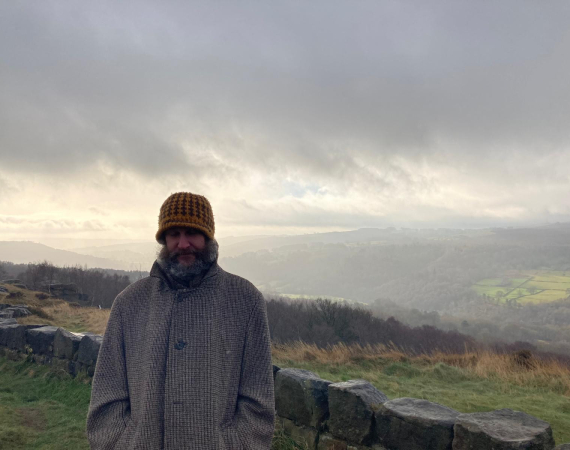
Photo of Geraint Edwards
Posted by
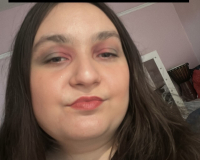
Rebecca Davies
Rebecca Davies is an intern at the Pervasive Media Studio, working on communications for the Pervasive Media Studio and the Watershed.Hi everyone,
As part of a short series featuring our Winter Residencies artists, Nat Whitney and Geraint Edwards, I’m excited to share my conversation with Geraint Edwards. While Geraint’s work spans a variety of media, it’s united by his curiosity about the intersection of the digital and physical worlds. His focus is on exploring how these realms influence our behaviour and the stories we experience through them.
Rebecca: Introduce yourself.
Geraint: I make work in lots of different media, and for a few years I have been making things around digital and physical translation. I am curious about what's happening in digital processes and environments, and in our behaviour within them. I like taking them out of the digital form, taking them apart conceptually and rebuilding them with physical materials.
Alongside that, I have been accumulating lots of thoughts, stories and ideas that do not fit into that series of work. Currently I'm in a bit of an experimenting phase where I'm trying to find media to house these stories, these ideas, without the medium becoming the subject. I want to make work in which the medium acts as a sort of container for ideas.
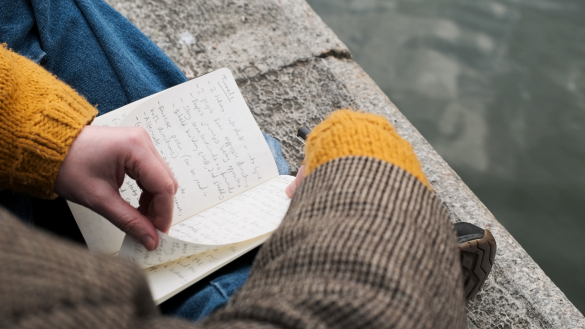
Rebecca: Your work spans various mediums, but a common theme seems to be “curiosity”, would you say this is an accurate description?
Geraint: Yes, I would say curiosity plays a big part in my thinking. There are some pieces of work that are very ordered that I work to pick apart, and in other cases I make things that are very chaotic, which invites order.
Rebecca: Can you give us some examples?
Geraint: Reverse Voight-Kampff is an example of taking something (a QR code) that's very precise, very accurate, very digital - something that is made by computers for computers to read - and sticking a messy, inaccurate human in the middle of the process, by getting them to draw the code by hand. It gets at trying to see where the overlap is between our abilities to create and read the results of our creations.
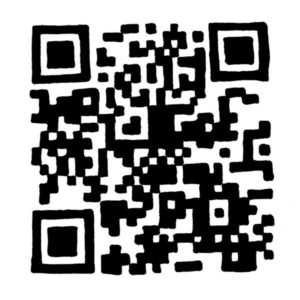
In terms of going the opposite way, organising things that seem chaotic, Google Translations / Cyfieithiadau Google is an example. This was a reaction to the seeming infinity of possible translations for words and trying to find some order in them. I took a word (e.g. "true") and translated it back and forth between Welsh and English, choosing one of the offered translations, until I arrived at the opposite meaning ("false"). I was trying to trace clear routes through the seeming chaos to show these connections.
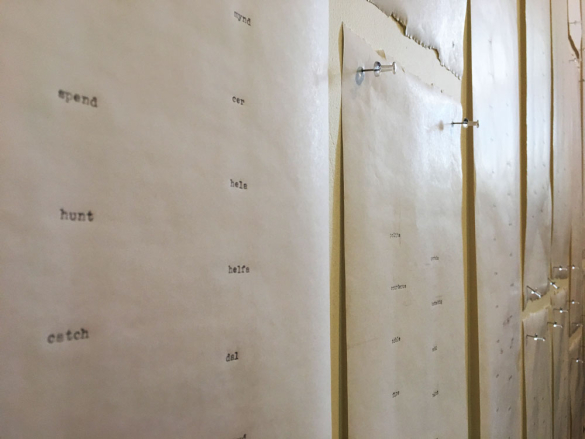
Rebecca: Tell us about your current project that you are working on.
Geraint: So, it is called Plug holes, and it is part of a bigger project about embedding stories and ideas in things. The larger idea is to create a non-linear sort of story landscape that you can pop bits of story and thoughts into, and then you can experience in any order. A landscape that you can dip in and out in the physical world, in actual reality. Plugholes is a specific one. It's a voice that comes out of a plug hole, and tells you lots of truisms and sentences that you might agree or disagree with. You can switch off the voice by triggering the tap, the water will come out, and the audio switches to a voice gargling those same sentences.
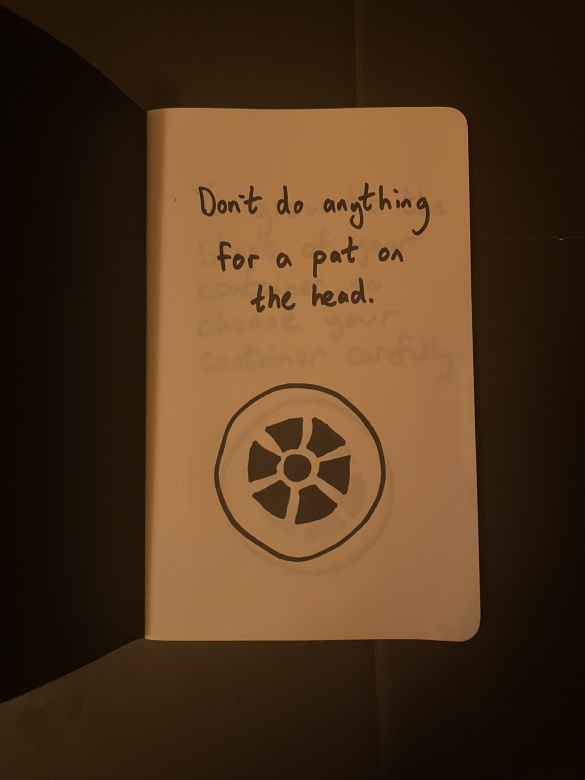
Rebecca: You mentioned that this may be part of a wider project. Do you have any ideas on what this might look like?
Geraint: The main thing I have been looking at is audio walks. I have experienced a few while I've been here, and they've been inspirational. I really like audio walks. I think they are intimate experiences and a good way to layer the present, the actual physical space with whatever you want to layer on top of it.
Rebecca: What are you enjoying about this project/ residency so far?
Geraint: The best part of this residency has been the opportunity to collaborate and discuss ideas with others. As an artist who often works alone, it's been incredibly valuable to have the chance to bounce ideas off my peers and learn from their perspectives. For example, during one conversation, we started talking about different techniques for hacking sensor taps. The discussion quickly evolved as we built on each other's thoughts and explored the practical details of how to approach the project. Moments like that have made me feel very fortunate to be part of this residency.
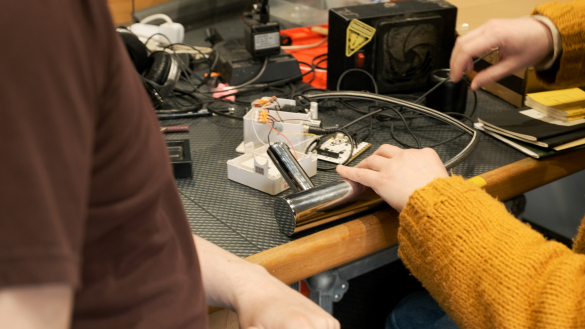
Rebecca: What would you like to achieve from this project?
Geraint: The technical goal I began with, was how to get a tap to react to a person through an action. I wanted to work with a sensor tap, but didn't know how to go about hacking it. This was an idea that had sat with me as a thing I wasn’t able to make for ages, and now it's doable. The project involved plumbing, which is a nightmare. I wouldn't have been able to do that otherwise. I’ve also been a bit of a hermit developing my work recently. All the learning and discussing is a big part of what I wanted to do during the Residency. Going forward I do want to work on the audio walks project which I mentioned earlier. I may not get around to making that during the Residency. We will have to see.
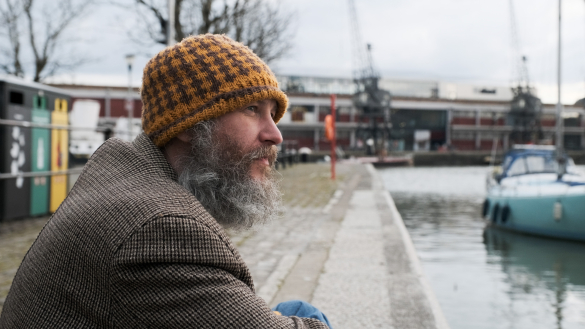
Rebecca: Who are your biggest influences for this project?
Geraint: The original inspiration for Plugholes was the shape of the plughole itself. I found that when I moved away and then I came back, I really missed the shape of the plughole because you spend so much time staring at it, doing things like brushing your teeth. I started drawing them, quite a lot, and I enjoyed something about that process. After a while, I started adding sentences to them and building them all up in a notebook of drawings of plugholes and sentences that that seemed like they came out of the plug hole. These were things that had occurred to me while I was brushing my teeth and staring at the plug hole. On the big scale, it fits into that series of layers of stories and embedding things in objects. It’s just a small moment that would ideally be something for someone to discover without any sort of warning, they'd come across it and discover it, and then maybe be curious about it, and for it to be, you know, a small reflective moment in someone's day.
Rebecca: Would you say it is pretty much like your influences behind your work in general?
Geraint: I think it's hard to know where you get inspiration from. I think it's easy to know what kind of work you like and then sometimes you think maybe that's what inspires you. I'm not sure if those things align particularly, but, for example, I really like Katie Patterson's work. She makes things on a very, very big and small scale, which are sort of powerful, sublime ideas and completely universal. I also really like Janet Cardiff's audio walks. Ever since they did Case Study B: The Missing Voice, I have always wanted to do an audio walk.
Rebecca: What is your favourite medium/ material to work with?
Geraint: I chop and change a lot. I often base the materials that I use on what would be the most appropriate for the project. I really like working with wood, because there are nice processes involved. I know it is an obvious medium, but for a reason, I think I connect well with it because it is natural. I made a wooden computer a couple of years ago, for this project called “Curiosity”, which asks you a lot of 'why’ questions with the aim of making you reflect on how you answer questions.
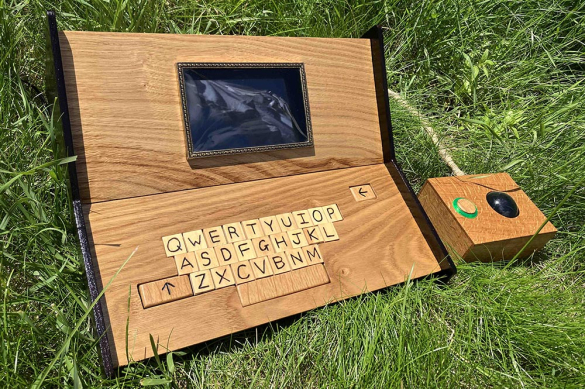
There was a keyboard underneath it, and I made all these wooden keys, just like glued onto the top of the keys. It was a very nice process. Recently I have been working a lot with code. I made a short one player game called “Fruit Flies” which is about death, or finding a way to live. It's very, very small, but it was really pleasing to make something in code that was made in p5 and “Phaser 3”, because there's just so many possibilities, really, with code.
That is a wrap on my conversation with Geraint! It was a pleasure speaking to him. It makes me think about where I get my best ideas and when random thoughts pop in my head. For me, they appear in situations when I am disconnected from technology- when I am out for a walk in nature, in the shower or bath, or most annoyingly, when I am in bed trying to sleep! I am excited to see Geraint’s progress so far, and his project in action.
You can visit Geraint's website here: geraintedwards.com or follow him on Instagram @thorelimo.
To see how my conversation with Nat Whitney went, click here: https://www.watershed.co.uk/studio/news/2025/04/04/part-1-conversation-nat-whitney